Whether you’re a bit of a geek or just looking for something to do around the Socorro, NM area, the VLA is a great place to go check out. Even if you’re not in the area and never plan to be, you’ll pick up some interesting information from this post. Having lived in Socorro, which is an hour east of the VLA, for several years I always took the VLA a bit for granted. While I’d driven past the VLA a few times, I never checked out the visitor center or took the tour for the longest time. Since the VLA is run by the NRAO which has a main building on the New Mexico Tech campus in Socorro where I got my bachelors degree, I’ve even known a few people who worked there. After almost a decade living in Socorro, I finally buckled Hoppy and friends in the car and went to take the guided tour of the VLA. It was well worth taking the time to go see it.
The Karl G Jansky Very Large Array or VLA for short is a radio telescope about 50 miles west of Socorro. It’s run by the National Radio Astronomy Observatory. If you’re wondering What is Radio astronomy? don’t feel bad, I never knew before finding out about the VLA either. Radio astronomy involves collecting radio waves from outer space to learn more about objects out there. The VLA is composed of 28 antennas, which look more like giant satellite dishes than like anything most of us would think of as a telescope. The antennas are truly massive with each one weighing in at 230 tons, standing 90 feet tall, and having a diameter of 82 feet. They can look small out on the open plain since there isn’t much to put them in perspective. (The picture I have below of the shop they have for maintenance has a pickup truck in it that will help you get an idea of the size of the antennas.)
The antennas can be moved on railroad tracks that are in a Y-shape and run out 13 miles from the center of the array. They use the array to study things like black holes, star birth, star life and death, pulsars, quasars and lots of other cool-sounding things. Another interesting NRAO link is their ask an astronomer page. You can ask questions here and they will pass it on to one of their experts in that area to answer.
There were a couple of interesting things that I learned while there that particularly stuck out to me. The WIDAR correlator is the super computer that compiles all the data from the antennas. When they installed it in 2011 it was the fastest super computer in the world. (As of my visit out there in March of 2016, it was down to being the fifth fastest, but that’s still pretty impressive.) I was just sad that it is in a restricted area and I couldn’t see it. The other thing I thought was really cool is that they have an atomic clock that can be viewed during the guided tour. They use it so they can precisely record when the data from the antennas is collected.
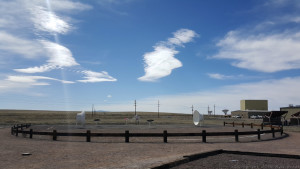
Another fun stop was the whisper dishes. The whisper dishes are setup outside the visitors center and are a stop on the self-guided tour. They are small dishes that demonstrate the principle of how the larger antennas work to focus the radio waves. The whisper dishes work with sound waves rather than radio waves so you can whisper from far away and another person standing with an ear in the center of the dish will be able to hear. The curved shape of the dishes basically bounces the sound (or radio) waves to focus them at a point in the center of the dishes.
With one degree in science and another in math, I’m a bit of a geek and I found the tour to be really fascinating. Also, thinking about the sheer size of our galaxy and the time frames astronomers deal with puts my own little life into perspective. All those problems in my life that can seem so huge are practically non-existent compared to the size of the universe.
With a sci-fi feel, the VLA is a great place for photos. It’s also been used as a filming location for movies and commercials. Here’s a few pictures from my latest trip out there:
What you need to know if you want to visit the VLA
What to see
Guided tours. Guided tours are available on the first Saturday of every month at 11, 1 and 3. You’ll want to show up a few minutes early to pay for admission. The self-guided tour and visitor center are great, but if you can make it, I recommend going to one of the guided tours. They have people there that can answer any questions that you may have.
Self-guided tours. Self-guided walking tours are always available. They provide maps with information about each stop on the walking tour.
Gift shop. There is a gift shop at the visitor’s center with lots of cool stuff.
Visitors center. The visitors center features exhibits and a 20 minute movie about the VLA. (You can also watch the movie on the NRAO website.)
What to bring
The tours do involve walking around outside. Also, it should be noted that the VLA is pretty much in the middle of nowhere (this is done to minimize the interference of man-made radio signals and also because they needed a large area to build the VLA.) So if you’re going to visit, I recommend bringing the following:
- a hat
- sunscreen
- good walking shoes
- snacks or a picnic
- camera
What not to bring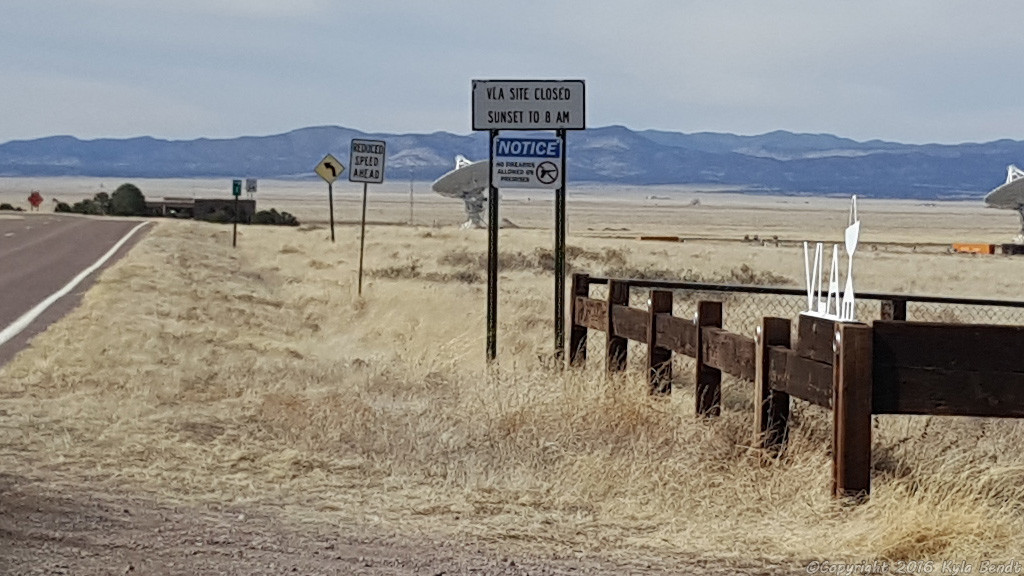
No weapons or guns allowed.
When to go
The site is open 8am to sunset. The visitors center is open 9-4 daily. Guided tours are available on the first Saturday of every month at 11, 1 and 3.
Additional Information
You’ll want to check out the VLA’s website and their page on guided tours.
VLA
I left Socorro early one Saturday
I went to go see the Very Large Array
It’s pretty much in the middle of nowhere
But it’s worth it to make a trip out there
It’s like something out of a sci-fi scene
I’ll admit, I didn’t wear sunscreen
My arms and face ended up sunburnt
But there were many things I learnt
They had the fastest computer- the WIDAR correlator
They’ve lost the record, now there’s five greater
But it still has enough speed
To do all the calculations they need
The big purpose of the WIDAR
Is to crunch the data from the stars
And it was fun to see the atomic clock
Do you think it goes tick tock?
Thanks to the VLA staff for a great tour and to the nice ladies in the gift shop for letting me take a picture of Hoppy with VLA bear.

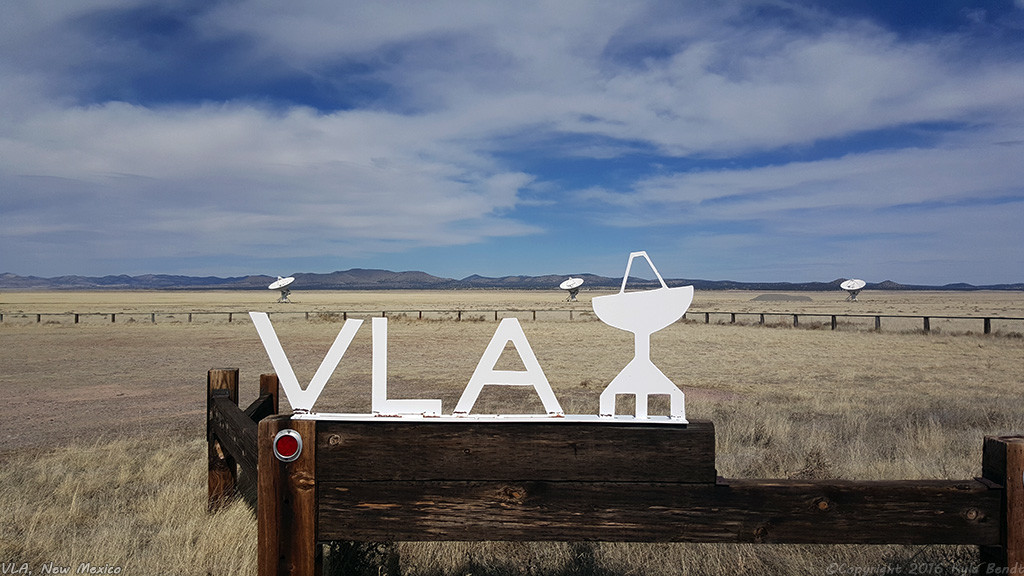
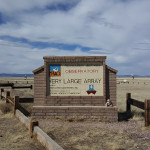
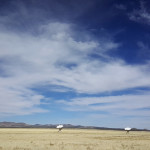
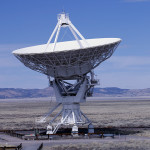
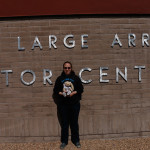
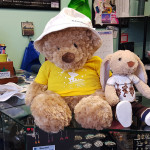
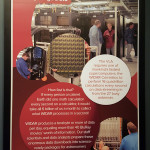
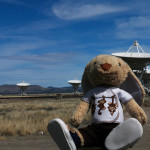
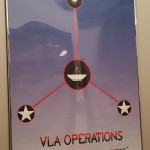
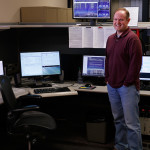
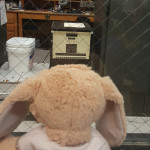
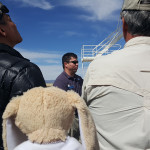
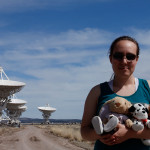
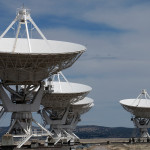
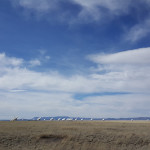
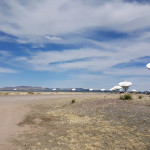
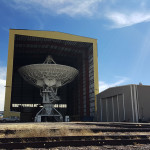
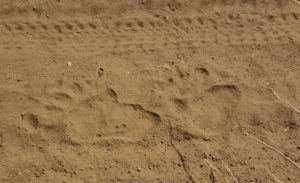
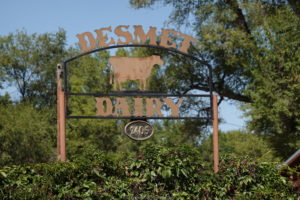
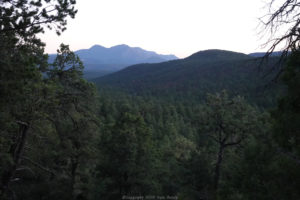
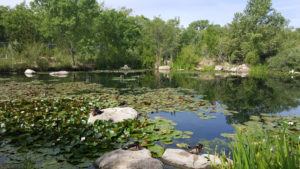
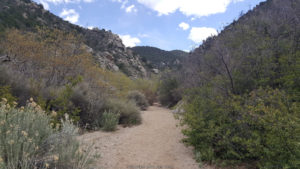
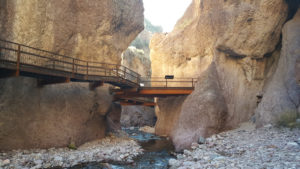
2 Responses
Hi,
Looks like a really cool place! Even Mr. Rabbit looks like he is intrigued with it. You even provide us with useful visitor information.
Great job!
Hi Gx,
I think Mr. Rabbit had a blast out at the VLA. It really is a fascinating place. Thanks for your comment!
-Kyla